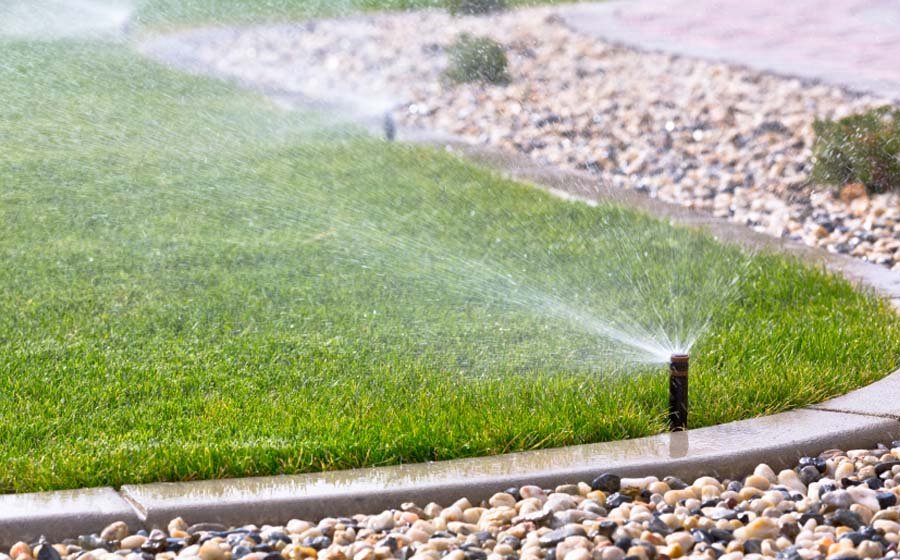A well-designed lawn irrigation system is a vital part of having a beautiful, healthy lawn. It is important to understand the basic principles of planning and designing a lawn irrigation system before you get started. By following these eight simple tips, you will be on your way to creating a lawn irrigation system that will keep your lawn looking its best all season long.
Table of Contents
1. Know Your Water Source
The first step in planning and designing a lawn irrigation system is to know your water source. Are you using city water or well water? What is the pressure of the water coming into your home? This information is important because it will determine the type of irrigation system that you can install.
City water is typically under higher pressure than well water. How about the pressure of the water coming into your well? This will also impact the type of system you can use. If you have high pressure, it’s more convenient to use it for your lawn irrigation since you won’t be required to install a supplementary device to boost the pressure of water.
2. Know Your Climate
The second step in planning and designing a lawn irrigation system is to know your climate. Do you live in an area with high rainfall? Do you live in an area with high temperatures and low humidity? This information is important because it will determine how often you need to water your lawn and what type of sprinklers to use.
3. Know Your Soil Type
Knowing the type of soil you have is the third step in the process of planning and installing an irrigation system for your lawn. In the same way that no two fingerprints are exactly the same, no two different types of soil are identical. The type of soil that is present in your yard will have an effect on the degree to which your lawn drains and the amount of water that it requires.
In comparison, clay soils are dense and sticky, while sandy soils are light and dry. The ideal balance between sand and clay can be found in loamy soils. If the soil in your yard is sandy, it will drain quickly and will need to be watered more frequently. Clay soil is capable of retaining rainwater for longer periods of time, thus it will require less regular watering.
4. Determine the size of your lawn
The fourth step in planning and designing a lawn irrigation system is to determine the size of your lawn. This information is important because it will determine the amount of time it takes to water your entire lawn and the number of sprinklers you will need to purchase.
5. Select the Type of Sprinkler Heads You Would Like to Use
The fifth step in the process of planning and creating an irrigation system for a lawn is to choose the sort of sprinkler heads that you want to employ. It might be difficult to determine which sprinkler heads are appropriate for your lawn because there are so many different kinds of sprinkler heads currently available on the market.
If you’re looking for a top-of-the-line product, you’ll want to choose a sprinkler head that is made of high-quality materials and offers a variety of features. Installing Sprinklers should not be a hassle with Heroes Lawn Care. To help you even more to make the best decision, here is a rundown of the different types of sprinkler heads available:
-Rotary heads: These sprinkler heads have a rotating nozzle that evenly distributes water over a large area. They are ideal for large lawns or commercial properties.
-Impulse heads: Impulse sprinkler heads have a piston that oscillates back and forth, creating a pulsating spray of water. They are often used in turf or field irrigation systems.
-Pressure-regulated heads: Pressure-regulated sprinkler heads are designed to maintain a consistent flow rate, even as the water pressure fluctuates. This makes them ideal for use in areas with irregular water pressure.
6. Select the Type of Controller You Would Like to Use
The sixth step in planning and designing a lawn irrigation system is to select the type of controller you would like to use. There are many different types of controllers available on the market today, so it is important to select the one that best meets your needs.
7. Install Check-valves Throughout Your System
The seventh step in planning and designing a lawn irrigation system is to install check valves throughout your system. Check-valves prevent backflow from occurring within your pipes, which can cause damage to your sprinklers and reduce the efficiency of your system overall.
8. Have a Professional Install Your System
The eighth and final step in planning and designing a lawn irrigation system is to have a professional install your system. While it is possible to install an irrigation system yourself, it is highly recommended that you have a professional do it for you so that everything is installed correctly and up to code.
Conclusion
By following these eight simple tips, you will be on your way to creating a lawn irrigation system that will keep your lawn looking its best all season long.










